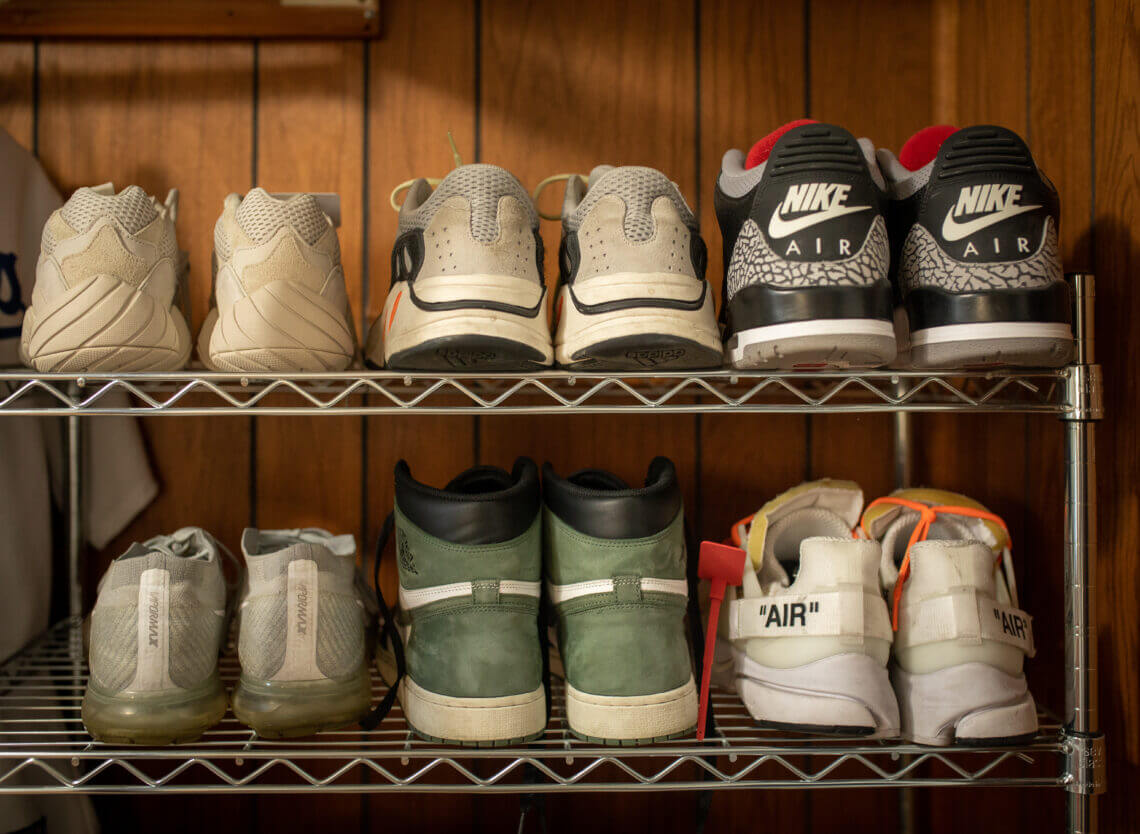
Selling streetwear: All that it’s hyped up to be?
On Oct. 8, 2020, New-York-based skateboard brand, Supreme, released a long-sleeve tee on their online store that featured what they dub as the “box logo” or “bogo” for short — the word “Supreme” in Futura Bold Italic font, encased within a rectangle. The shirt was priced at $48 USD.
It sold out in under one minute. Every color. Every size.
Supreme is just one brand consisting of today’s “streetwear” culture whose key marketing tactic is to supply a small amount of stock relative to each brand’s high demand.
This shortened supply creates an exclusivity which is one of many contributing factors to these brands’ large followings. Celebrity endorsements, brand authenticity, community belonging, social clout, higher quality, and collaborations with other household names are all ingredients to increasing these brands’ perceived value.
These brand consumers, labelled as “hypebeasts”, have an appetite to buy rare and exclusive clothing, shoes and even home goods.
Sneaker brands like the Kanye West and Adidas- collaborated Yeezy line, as well as Michael Jordan’s Air Jordan shoes have both celebrity equity and scarce supply.
Owner of streetwear brand Off-White and creative director of Louis Vuitton, Virgil Abloh, collaborated with Ikea to create home rugs (for those in Ontario looking to buy the rug, only the Ikea in Etobicoke carried them and the store was supplied with a measly 50 units).
The world of streetwear culture is expansive. Drops occur on a regular basis and these brands are showing no signs of slowing down. What was once niche is bleeding into the mainstream. Those looking to enter the streetwear ethos are ever growing.

What’s it like buying a hyped good?
Buying a hyped good when it first drops has always been difficult. Before e-commerce sites, consumers would have to line up in front of stores hours the day before the item was released. Stores are now conducting online raffles in which the probability of one’s name being drawn is small. Web stores that have a first come first serve release process are often raided by bots; computer automated tools that can purchase products in seconds.
The by-product of this skewed supply to demand ratio are the trickle-down effects to the secondary market, where those who were able to acquire these rare goods at retail price can flip them at a premium to those desiring to be part of this exclusive club.
The Supreme box logo tee resells for an average price of $200 USD, a $156 USD profit. The Virgil Abloh and Ikea collaboration rug sold for $500 USD retail and now sells for upwards of $2000 USD on the secondary market.
What’s the resale market like?
The streetwear resale market has become so large that whole companies have started based on this once niche subculture. StockX is an e-commerce platform where sellers can post their items and connect them to potential buyers. Additionally, the platform keeps track of all items sold and displays that data in resemblance of a stock market ticker. It gives buyers and sellers an idea of how much these goods are worth and helps prevent potential ripoffs.
At a more local level, there are Facebook groups such as “Toronto Streetwear” and “Supreme Resell Toronto” which have between 4,500 and 16,000 members that enables users to set up in person meetups.
Is it worth it to be a reseller?
As someone that has resold items and kept up with this subculture for 3 years now, I would say it depends.
If you are in it solely for the money, then no.
With this market expanding more by the day, it is exhausting to keep up with every drop. Plus, if you don’t have a “plug” (someone who can get you access to these goods with little to no friction) or know how to program a bot, then the likelihood of you hitting on the most pro table items is slim to none.
Additionally, just because an item has “Supreme” on it, does not guarantee it will resell for a profit. I’ve made as much as $600 reselling a single item but there have been many more occurrences where I think an item will resell for a lot but end up breaking even or making a meager $20.
Even the process of finding a buyer can be cumbersome. If you were to take the local route and try to connect with buyers via Facebook, the back and forth direct messaging and negotiations can be time consuming.
If meeting up in person, you run the risk of potential robbery, assault, or confrontation. If the buyer is not local, then both parties have to consider shipping into the final price which can cut into the seller’s profit margin. Using a platform like StockX will also cut into one’s profits as they charge a three per cent transaction fee and 9.5 per cent processing fee.

Personally speaking, I’m not entirely in it for the money. I genuinely enjoy following the brands that compose this space and am willing to shell out the higher price points that come with them — only once in a while, of course.
Most of these brands put a lot of thought behind their designs, quality of clothing, and authenticity. I own a handful of items that would resell for some profit but decide to keep them and actually wear them.
If you’re a genuine fan of streetwear then reselling gives you an opportunity to connect with people in the culture, while making a few extra bucks to subsidize this expensive hobby. Only then is reselling worth it.
If you do decide to try your hand at the next Supreme drop or enter a raffle and are dealt an inevitable loss, just remember, it’s only clothes.
About the author


